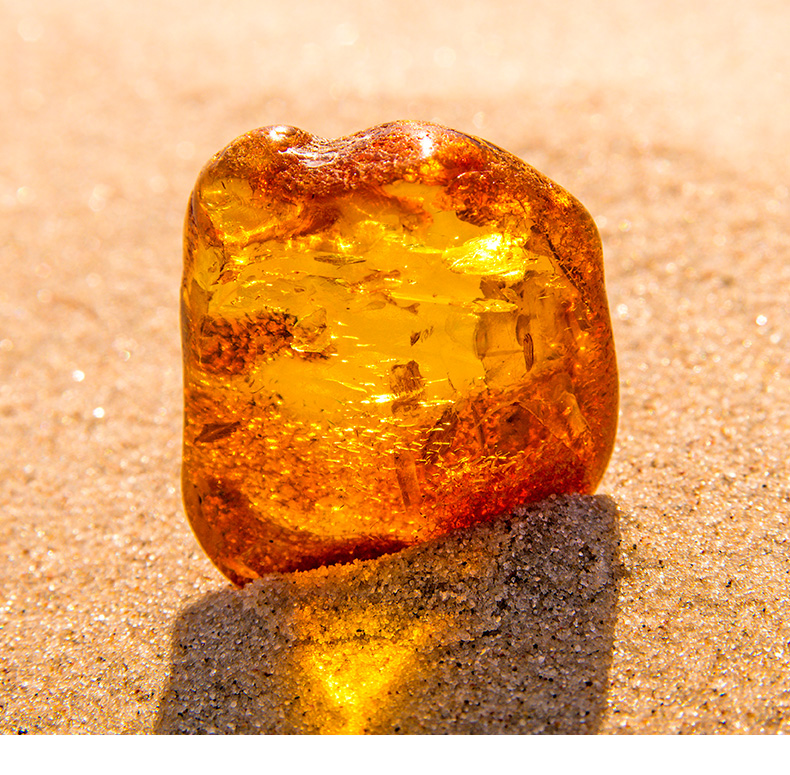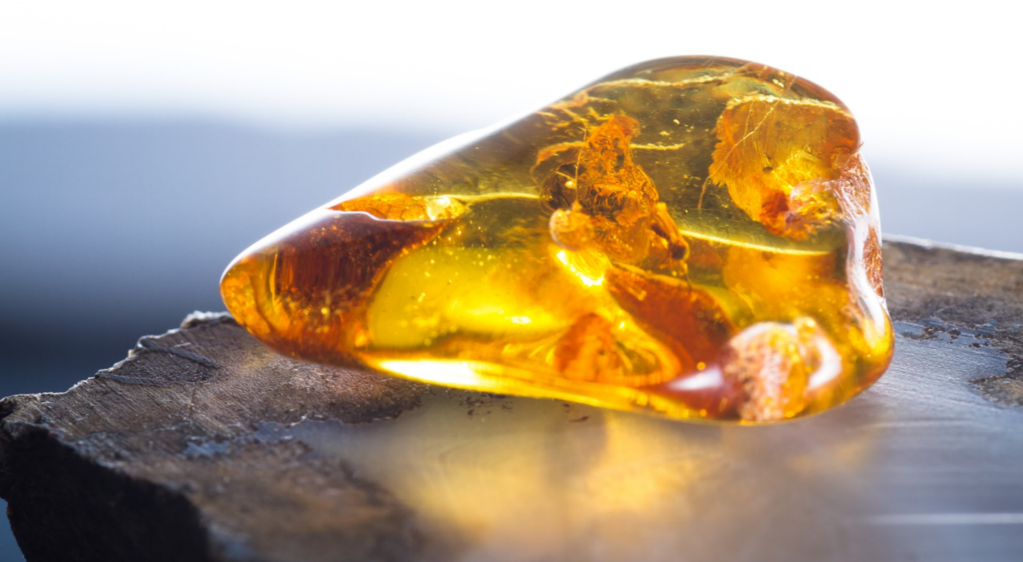Unearthing The Secrets Of Amber: A Journey Through Time
Table of Contents
- What Exactly is Amber? A Glimpse into Prehistory
- The Ancient Origins of Amber: Millions of Years in the Making
- The Allure of Inclusions: Life Frozen in Time
- Authenticity Tests for Real Amber: Separating Fact from Fiction
- Working with Amber: Polishing and Care
- Rarity and Value: Is Amber Truly Scarce?
- Collecting Amber: Tips for Enthusiasts
- Conclusion: The Enduring Legacy of Amber
What Exactly is Amber? A Glimpse into Prehistory
Amber is not a stone, but rather fossilized tree resin. Over millions of years, organic resin secreted by ancient trees underwent a process of polymerization and hardening, eventually transforming into the durable, translucent material we know today. This process typically occurs under specific geological conditions, often involving burial in sediment layers, which protect the resin from decomposition and allow for its gradual fossilization. The result is a substance that can range in color from pale yellow to deep reddish-brown, sometimes even blue or green, and can be remarkably clear or opaque. True amber often also has debris in it too, and can have internal fractures, adding to its unique character.The Ancient Origins of Amber: Millions of Years in the Making
The age and origin of amber vary significantly depending on its geographical source, each telling a different story of ancient forests and climates. This diversity is crucial for both scientific study and for collectors seeking specific types of amber.Baltic Amber: The Most Common Treasure
Baltic amber is by far the most common and widely recognized type of amber globally. It originates from ancient pine/woodland forests that lived about 40 million years ago, during the Eocene epoch. These vast forests once covered much of Northern Europe, and their resin eventually accumulated in marine sediments, leading to the rich deposits found today, primarily around the Baltic Sea region. Its prevalence makes it a benchmark for authenticity and quality in the amber market. I've got this piece of Baltic amber from my dad's collection which I polished one side of (I loved the look of the rough, natural surface of the back side), showcasing its natural beauty.Dominican and Sumatran Amber: Tropical Time Capsules
Beyond the Baltic, other significant amber deposits offer unique characteristics and insights. The amber from the Dominican Republic is about 25 million years old (Oligocene epoch) and came from a tropical rainforest environment. This younger age and different ecosystem explain the remarkable biodiversity found in Dominican amber, often featuring well-preserved insects, spiders, and even small vertebrates that thrived in ancient tropical climates. Got a cool one for you guys, a decent sized scorpion in amber from Burma, probably about 100 million years old. The most interesting part to me is the tail sort of curves down 90 degrees, highlighting the incredible preservation. More recently, Sumatran amber has emerged as a new discovery, offering unique blue hues. This is a 10.1 gram semi rough piece of blue amber from Sumatra, a fascinating addition to the world of fossilized resins. Each region's amber tells a distinct geological and biological narrative.The Allure of Inclusions: Life Frozen in Time
One of the most captivating aspects of amber is its ability to preserve ancient life forms. Insects, spiders, plant fragments, and even small vertebrates can be found perfectly encased within the resin, offering an unparalleled glimpse into prehistoric ecosystems. These inclusions are invaluable to paleontologists, providing direct evidence of species that existed millions of years ago.Genuine vs. Fake: Understanding Inclusions
The presence of inclusions is often seen as a mark of authenticity, but caution is advised. Not all inclusions signify genuine amber, and some fakes are quite sophisticated. The big pieces with scorpions, beetles or butterflies that are relatively cheap, are often extant (modern) insects embedded in resin, not true amber. These "fake amber inclusions" are common on auction sites. Real, not fossilized insects in amber-like resin, are a clear sign of a modern fabrication. True amber inclusions will show signs of ancient preservation, often with some degradation or cloudiness around the organism, rather than perfectly pristine modern-looking specimens.Rare and Remarkable Finds in Amber
While common insects like ants or mosquitoes are frequently found, some inclusions are truly extraordinary. I've seen a very nicely sized caddisfly in Baltic amber, which are fairly common fossils from the region. Allegedly only seven pieces of a particular rare inclusion have been found, but I found a piece of petrified wood that had amber running down the top of it, and around it are scattered drops of it – a unique geological combination. If it is petrified wood, and that will remain in doubt without very sharp closeups, then there is almost no chance that is amber because amber preserves under very different conditions. This highlights the importance of expert analysis for truly rare or unusual specimens.Authenticity Tests for Real Amber: Separating Fact from Fiction
Given the value and scientific importance of genuine amber, distinguishing it from imitations is crucial. Several simple tests can help determine authenticity, though for high-value pieces, professional evaluation is always recommended. * **Black Light Test:** This is a common and often effective test. When exposed to a UV (black) light, real amber typically fluoresces. For instance, I purchased this Baltic amber from Lithuania, and tried the black light test; the very clear amber turns opaque cream-like color under UV light, which is a good indicator of authenticity. * **Saltwater Float Test:** Genuine amber is relatively light and will float in a saturated saltwater solution (about 2 parts water to 1 part salt). Most plastics and glass imitations will sink. * **Scratch Test (Caution!):** Amber is soft. Amber and copal (a younger, less fossilized resin) for those of you that like copal is soft. You can often scratch it with a fingernail or a copper coin, whereas glass or harder plastics will not scratch as easily. However, this test can damage the specimen, so use with extreme caution. * **Heat Test (Avoid for valuable pieces):** Rubbing amber vigorously can generate enough friction to make it slightly warm and emit a faint piney scent. Heating it with a hot needle (in an inconspicuous spot) will cause real amber to release a resinous, pine-like smell, while plastic will smell like burning plastic. This test is destructive and should be avoided for any valuable or cherished pieces. Some are far too skeptical of amber's authenticity, but many real specimens with insects are found and sold across the world (more than 1% are genuine). It's about knowing what to look for and being aware of common fakes.Working with Amber: Polishing and Care
Amber, despite its ancient origins, is a relatively soft material compared to gemstones or minerals. This softness means it requires careful handling, especially during processes like polishing. I've gotten it pretty decently polished on one side of my Baltic amber piece, but it requires a delicate touch. When polishing amber, you almost want a feather touch. Too much pressure and speed can lead to heating, cracking, or deeper scratches that you will still have to remove. This is particularly true for larger pieces or those with delicate inclusions. The goal is a gradual, gentle abrasion using progressively finer grits, culminating in a high polish that brings out the material's natural luster without causing damage. For collectors, understanding how to properly care for and, if necessary, restore amber pieces is essential for preserving their beauty and value.Rarity and Value: Is Amber Truly Scarce?
Amber isn't nearly as rare as some may think, especially common varieties like Baltic amber. Many real specimens with insects are found and sold across the world. However, the value of amber varies widely based on several factors: * **Size:** Larger pieces are generally more valuable. * **Clarity:** Clear, transparent amber is often prized, though opaque or cloudy varieties can also be beautiful. * **Color:** Rare colors like blue or green amber command higher prices. * **Inclusions:** The presence, type, and preservation of inclusions significantly impact value. A well-preserved, rare insect or a unique plant fragment can make a piece exceptionally valuable. A decent sized scorpion in amber from Burma, for example, is a highly sought-after specimen due to its age and the completeness of the inclusion. * **Origin:** Amber from certain regions, like Dominican blue amber or very old Burmese amber, can be more valuable due to its unique characteristics or scientific significance. * **Condition:** Pieces free of cracks, chips, or excessive internal fractures are more desirable. While common amber is abundant, truly exceptional pieces with rare inclusions or unique characteristics can indeed be quite valuable and sought after by serious collectors and scientific institutions.Collecting Amber: Tips for Enthusiasts
For those interested in starting or expanding an amber collection, here are some practical tips: * **Educate Yourself:** Learn about the different types of amber, common fakes, and authenticity tests. The more you know, the better equipped you'll be to make informed purchases. * **Buy from Reputable Sources:** This is paramount. Whether online or in person, purchase from dealers with good reputations and transparent return policies. This reduces the risk of acquiring fake or misrepresented pieces. * **Inspect Carefully:** Always examine pieces closely for signs of authenticity, clarity, and the quality of any inclusions. Use a loupe or magnifying glass if possible. * **Consider Your Budget:** Amber is available at a wide range of price points. You can start with more affordable, common pieces and gradually invest in rarer or more significant specimens as your knowledge and budget grow. * **Storage and Care:** Store amber away from direct sunlight, extreme temperatures, and harsh chemicals, as these can cause damage over time. Clean with mild soap and water, and dry thoroughly. Collecting amber is a rewarding hobby that connects you to ancient history and natural beauty. Usually, the amber is posted at 7 pm GMT on certain reputable sites, so just convert that time into whatever time zone you're from to know when best to check for new listings. Also make sure that the website can ship to your location.Conclusion: The Enduring Legacy of Amber
From the ancient forests of the Baltic to the tropical rainforests of the Dominican Republic, amber stands as a testament to the Earth's deep history. This remarkable fossilized resin offers us not just beauty, but also invaluable scientific data, preserving glimpses of life from millions of years ago. Whether you're a seasoned collector or simply fascinated by natural wonders, understanding amber's origins, characteristics, and authenticity is key to appreciating its true value. We hope this comprehensive guide has illuminated the intricate world of amber for you. Do you have a favorite type of amber, or perhaps a cherished piece in your collection? Share your thoughts and experiences in the comments below! If you found this article insightful, please consider sharing it with fellow enthusiasts or exploring other natural history topics on our site.- Kimberley Strassel
- Ninomae Inanis
- Glenn Close And Robin Williams Related
- Stephen Ira Beatty
- Murphy And Mitzi

Amber explained in the jewellery encyclopedia

Amber Gemstone: Properties, Meanings, Value & More

Amber Meanings, Properties and Uses - CrystalStones.com